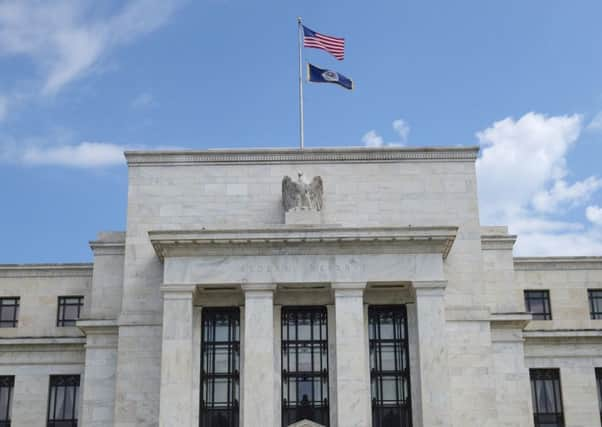Jeff Salway: Investors win but mortgage costs to rise


The first US rate hike since 2006 is an end-of-year boost for equity investors, but higher mortgage rates are on the way for homeowners.
That’s the expert verdict after the US Federal Reserve ended months of uncertainty when it raised interest rates by 0.25 per cent.
Advertisement
Hide AdAdvertisement
Hide AdThe increase may encourage the UK to follow suit over the next 12 months. That expectation could trigger a wave of activity in the mortgage market in the new year, experts say, with the price war between lenders already drawing to a close.
Higher interest rates would also pose difficulties for millions of vulnerable households.
The Bank of England this week warned that many would be forced to cut spending or work longer hours to cope with the effects on their income. It said that while recent low inflation had given households breathing space after a prolonged squeeze on living standards, the UK government austerity programme “has weighed on household spending” and is likely to continue doing so.
But the immediate focus in the wake of the Federal Reserve’s decision was on the implications for markets, and by extension the ordinary investors and pension savers with billions of pounds in funds exposed to global equities and debt.
WHAT IT MEANS FOR INVESTORS
The rate increase brought an end to months of speculation and uncertainty, boosting stock markets in the US, Europe and even Asia, despite fears of an adverse reaction in emerging markets.
Tom Munro, owner of Tom Munro Financial Solutions in Larbert, said: “This should now provide further encouragement investors will need to put in place a long-term investment strategy as markets improve into 2016 and beyond.”
The companies most likely to gain from the rise include lenders and other financial services groups, according to Chris Connor, global equities portfolio manager at Martin Currie.
“Banks are perhaps the most obvious example of the companies that are likely to benefit from rising interest rates. Higher rates mean they can charge more for lending. Insurers can also benefit, earning higher returns on premiums,” he said.
Advertisement
Hide AdAdvertisement
Hide AdThe impact of the move on currencies should be positive across the board for UK investors, said Helal Miah, investment research analyst at The Share Centre. “An interest rate rise in the US may not be bad news for UK based investors since an appreciating dollar should increase translated earnings for UK based companies.”
But developing markets, to which millions of private investors are exposed through global, Asian and emerging market funds, may suffer. Improving confidence in the US has seen investors move money back out of emerging markets into safer holdings, while higher borrowing costs and tighter US monetary policy could also trigger company defaults in emerging markets, particularly in countries such as Brazil and Russia (which rely most heavily on international finance).
The outlook for bond funds, in which many large pension funds are heavily invested, is similarly downbeat. “Fixed income still looks expensive and is perhaps ‘more risky’ than in the past,” said Jonathan Lau, an investment analyst at Anderson Strathern Asset Management in Edinburgh.
“Absolute return vehicles and property remain suitable alternatives for those who wish to reduce their exposure.
“Within fixed interest, investment grade bonds offer a good balance between quality and interest rate risk.”
WHAT IT MEANS FOR SAVERS AND BORROWERS
With three or four US rate rises predicted for 2016 the focus will soon turn to the Bank of England. UK interest rates have remained a 0.5 per cent since March 2009, but history suggests that the Bank tends to follow the Fed in raising interest rates.
While no change is likely in the first half of 2016, mortgage lenders are already anticipating an increase over the next year and several have increased their fixed rates in recent weeks, Any rate rise would have significant repercussions for borrowers sitting on their lender’s standard variable rate (SVR). Rachel Springall, finance expert at Moneyfacts.co.uk, warned that monthly repayments could increase rapidly.
“The average SVR in December 2008 sat at 5.68 per cent while today it stands at 4.82 per cent, but borrowers who are worried about rising interest rates should look to secure cheaper deals now: two-year fixed rates today can be as low as 1.14 per cent while five-year rates can be found at 2.19 per cent.”
Advertisement
Hide AdAdvertisement
Hide AdThere’s not much light at the end of the tunnel for long-suffering cash savers, however. The average easy access account currently pays just 0.66 per cent, said Springall, but it will take more than a small interest rate rise for that to improve.
“The link between base rate and savings rates today may no longer be very strong thanks to lending initiatives by the government, which mean that mainstream providers don’t need savers’ deposits to fund their mortgage books,” she explained.